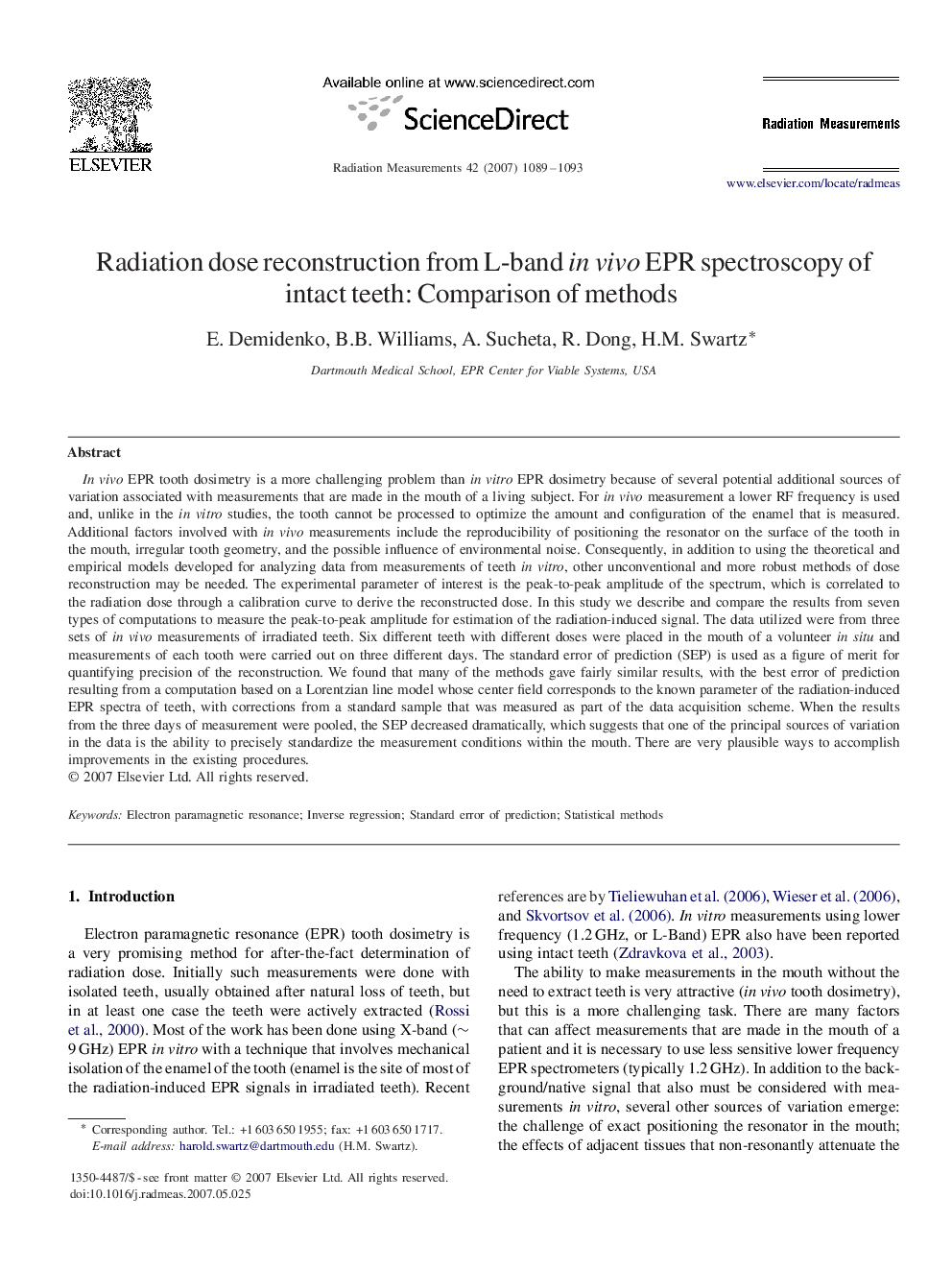| کد مقاله | کد نشریه | سال انتشار | مقاله انگلیسی | نسخه تمام متن |
|---|---|---|---|---|
| 1888987 | 1533449 | 2007 | 5 صفحه PDF | دانلود رایگان |

In vivo EPR tooth dosimetry is a more challenging problem than in vitro EPR dosimetry because of several potential additional sources of variation associated with measurements that are made in the mouth of a living subject. For in vivo measurement a lower RF frequency is used and, unlike in the in vitro studies, the tooth cannot be processed to optimize the amount and configuration of the enamel that is measured. Additional factors involved with in vivo measurements include the reproducibility of positioning the resonator on the surface of the tooth in the mouth, irregular tooth geometry, and the possible influence of environmental noise. Consequently, in addition to using the theoretical and empirical models developed for analyzing data from measurements of teeth in vitro, other unconventional and more robust methods of dose reconstruction may be needed. The experimental parameter of interest is the peak-to-peak amplitude of the spectrum, which is correlated to the radiation dose through a calibration curve to derive the reconstructed dose. In this study we describe and compare the results from seven types of computations to measure the peak-to-peak amplitude for estimation of the radiation-induced signal. The data utilized were from three sets of in vivo measurements of irradiated teeth. Six different teeth with different doses were placed in the mouth of a volunteer in situ and measurements of each tooth were carried out on three different days. The standard error of prediction (SEP) is used as a figure of merit for quantifying precision of the reconstruction. We found that many of the methods gave fairly similar results, with the best error of prediction resulting from a computation based on a Lorentzian line model whose center field corresponds to the known parameter of the radiation-induced EPR spectra of teeth, with corrections from a standard sample that was measured as part of the data acquisition scheme. When the results from the three days of measurement were pooled, the SEP decreased dramatically, which suggests that one of the principal sources of variation in the data is the ability to precisely standardize the measurement conditions within the mouth. There are very plausible ways to accomplish improvements in the existing procedures.
Journal: Radiation Measurements - Volume 42, Issues 6–7, July–August 2007, Pages 1089–1093